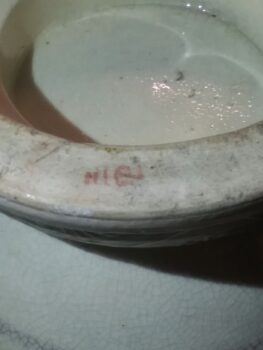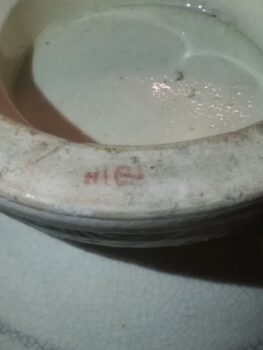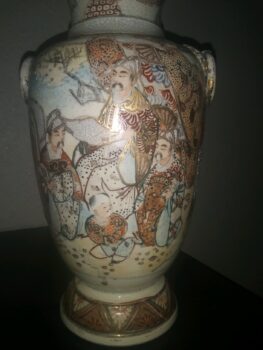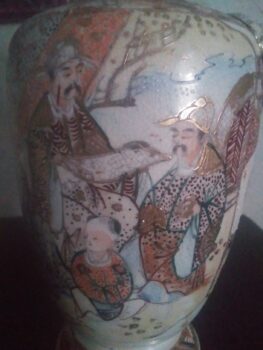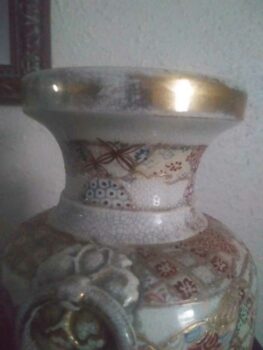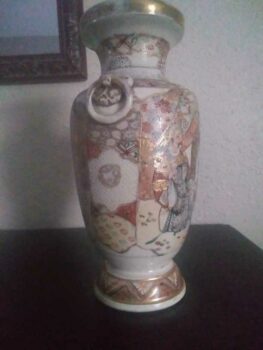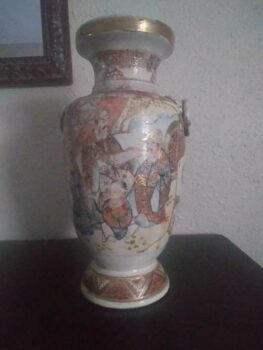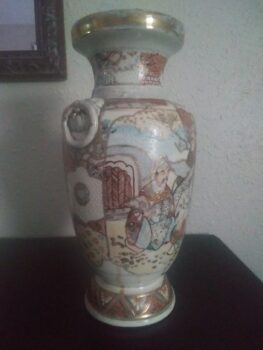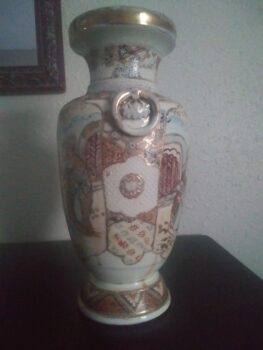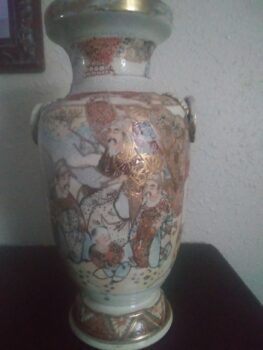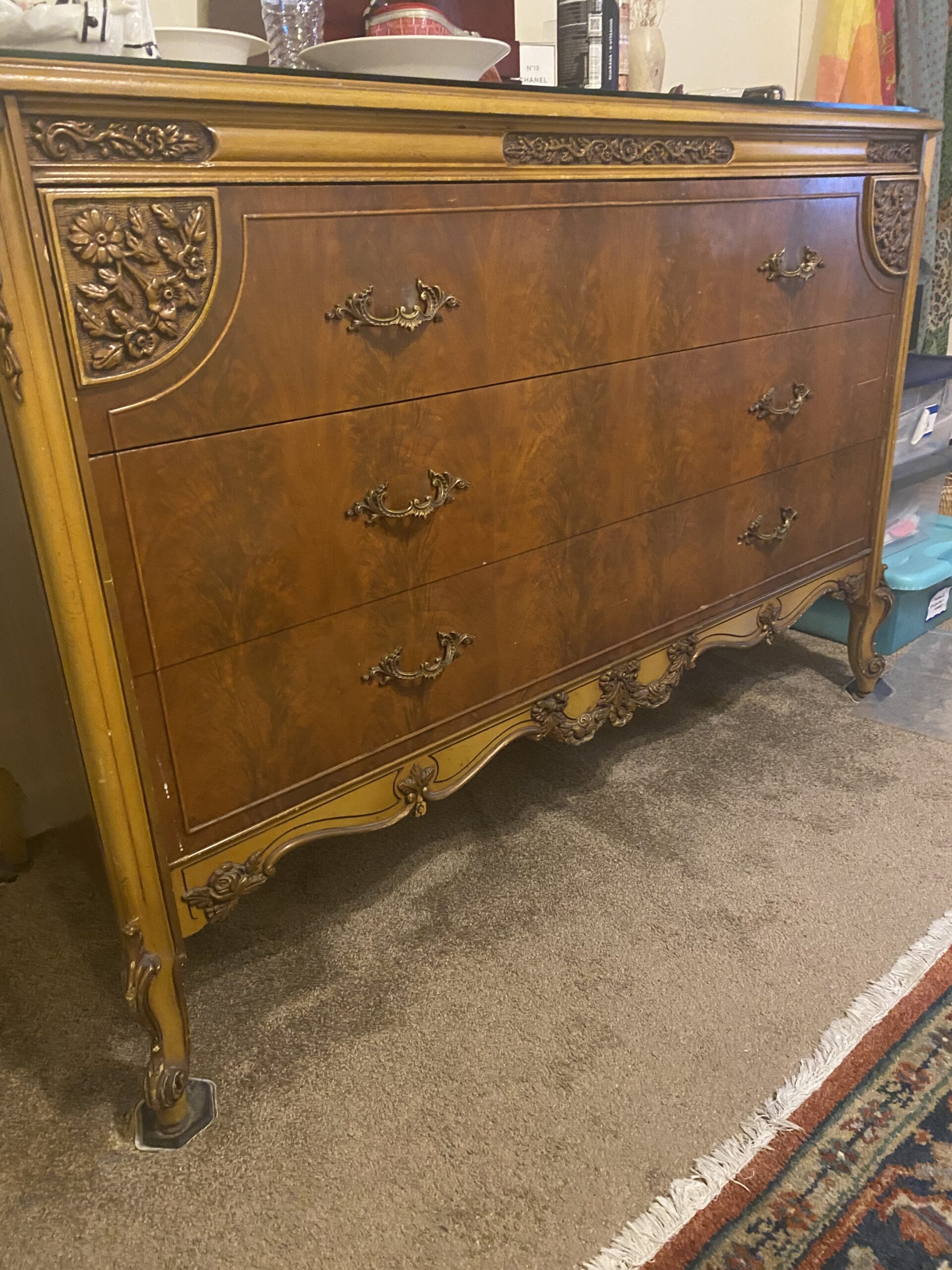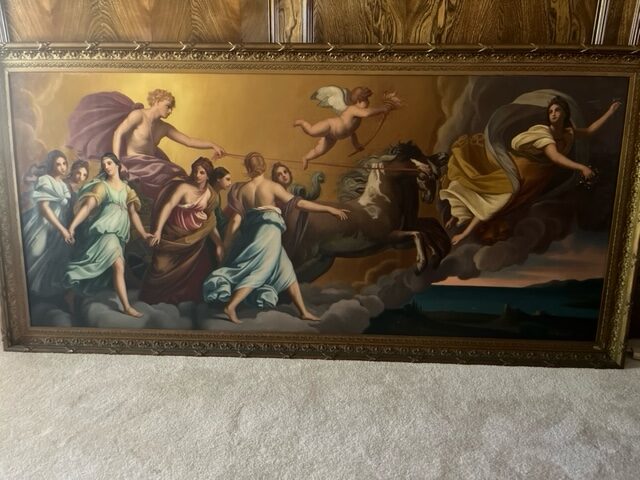A Japanese Satsuma Vase from circa Meiji Period
This is a professional appraisal report for provided upon request. It contains a detailed description and evaluation of your . This document also includes information about how to sell your item and about the valuation method we’ve used. Keep in mind that the appraisal value is only applicable to this particular unit and should NOT be understood as a general valuation of . It is very important to understand this, as values can range from 100 to 100K depending on subtle details.
This report is designed to give you an appraisal value for the you own, whether it is furniture, china, glassware, or other types of antique or collectible items. The information provided will help you to understand your piece and its value. It also provides an appraisal value in US dollars, as well as how to sell it. This report is not intended to encourage you to sell your antique; rather it aims to provide information on your antique’s value so that you know what steps to take if you do wish to sell.
Description and history of
This is an Original Japanese Satsume Pottery from circa 19th Century.
Identification
The term ‘Satsuma Pottery’ is used to describe a type of Japanese earthenware that has been produced since the mid-1800s. This style of ceramics is renowned for its delicate designs and vibrant colors, which are typically done by hand-painting. Satsuma pottery pieces can range widely in their portrayal of nature with botanical themes, figures, landscapes, and even Buddhist symbols. Notable features provided by Satsuma pottery include detailed ivorywork embellishments and small inserts of metal foil or gold which add extra shine to the artwork. Even today, Satsuma pottery continues to be sought after because it offers a perfect blend of traditional craftsmanship and aesthetic beauty.
The origins of Satsuma Pottery can be traced back to the 16th century, when it was first produced in Kagoshima, Japan. From its conception, Satsuma Pottery was created using a distinct pottery-making method that involved forming wet clay into creative shapes and glazing it. The process continued until the early 20th century, when changes in technology and the demand for greater value from a single piece meant that artists put more time and effort into their craft.
This vase perfectly matches the category of Satsuma Pottery.
Provenance
Satsuma Ceramics were originally created in Japan, and they were highly sought-after items due to their intricate designs and delicate beauty. Despite there being a large concentration of Satsuma producers in Japan, it wasn’t long before some of the pieces began appearing with a “Made in China” on them. Although some artisans experimented with making different materials in China, their efforts never evolved beyond an experimental level. The majority of the Satsuma pottery produced in the 1920s and 30s still came from the traditional workshops located in Japan. While some Chinese Satsuma pieces are interesting collectibles today, it is almost entirely Japanese artisans who are credited for making this exceptional type of pottery.
For this vase we have a bottom maker’s mark, that is reproduced here. Both the mark and the roughness of the bottom mark indicates this piece was made circa 19th Century. A reproduction from circa 20th Century would have a smooth bottom part, due to a more refined manufacturing process.
The mark also tell us this piece was made in Japan, in circa Meiji Period (late 19thC).
Age
This piece was made circa Meiji Period, late 19th Century.
Style
Satsuma vases have become quite the object of desire in recent years, not only because of their stunningly beautiful details, but also because of their rich cultural history. Created by Japanese potters centuries ago, these exquisite porcelain pieces are sought out for their vibrant red colors and ornate golden motives. The materials used to craft Satsuma vases make them highly desirable to serious collectors as well as casual hobbyists looking for a piece of history and a unique accent for their home’s decor.
Appraisal Value ($)
$650-800.
Appraisal Report made by:
Andrés Gómez
BSc, MSc, Expert Art Appraiser
10+ years of experience in online antique and collectible appraisals.
100k+ Customers Served.
Antique Store Owner.
You can check my portfolio of past appraisals here:
https://www.appraisily.com/andres-portofolio/
Signature:

We have Experts online now.
Pictures received.
How to sell it
Antiques, art, and other collectibles are difficult items to sell online. Selling can take a lot of time. Be patient, but also make sure that the price you are asking for is the right one for your pieces of art. Consider the following tips on how to sell antiques and collectibles online: These tips will help maximize the price of your antique or collectible.
I would recommend selling it online. There are many ways to do this. For instance, Post an ad on Craigslist. Use eBay to sell antiques online. Post a listing on the Etsy marketplace. Sell with direct messages using Instagram. You can create a website using Squarespace or WordPress. Use Shopify to sell via a website, POS and social channels. List your items on Bonanza.com, Facebook Marketplaces, or Amazon Marketplaces. If you don’t have time, I would recommend starting with Facebook, Etsy, and Amazon.
The key to selling antiques online is to let potential customers know that you know what you are talking about. It’s much more difficult to sell something when the potential buyer can’t be sure it’s authentic. Sellers should use a well thought out descriptive guide like this one. A good lead generation service should be helpful in establishing these relationships with online buyers, and an effective way to do this is through classified ads. If a buyer asks for more information, giving them some valuable facts well ahead of time will get you more sales because your reputation will increase and real customers are the ones who ask for more details.
In order to sell your antiques online, you will need to create a profile on the relevant forum (Etsy, Amazon, and FB). Make sure you add a high-resolution image of the product (include at least 3 detailed photos) and add some text. The text should be informative and straight to the point; nothing fancy or fluffy.
Asking price is a big factor in selling your antique. If your asking price is too high (fancy company stickers, missing parts, or chipped paint), you are unlikely to get many bids. If the asking price is too low, it will cost you money for repairs, shipping, and insurance. As a general rule, I would recommend setting an asking price that is 80% of the value of this report, so you will make the listing attractive from the beginning.
About the valuation method
This is a detailed report of the value of your piece. To determine the value, the appraiser has considered the results from past auction sales. Keep in mind that the final price can be different from the asking price that you can find on the internet. You can see ads on the internet with different asking prices. However, a very high asking price doesn’t normally find cash from a buyer.
That’s why our method comprises searching and comparing similar past sale results that had a buyer. That’s why we can provide an accurate estimation of this item.
To get an accurate valuation of your antique piece, I considered the following: description, condition, and possible precious metal content. History, age, provenance, and the importance it has played in history are also considered. A crucial interest is a collector’s willingness to buy this piece. While some antiques are really collectible, others are really difficult to sell, and hence their value decreases.
Antiques can be a good investment. A piece’s year of manufacture, condition, rarity, and history can all influence an antique’s value.Antiques, when bought wisely and carefully, can provide many good years, even decades, of enjoyment before their value appreciates significantly. Antique furniture, paintings, prints, and maps are not only useful works of art but also tangible assets. Their value in the market increases every year, making them great long-term investments for people who want to diversify their assets.
